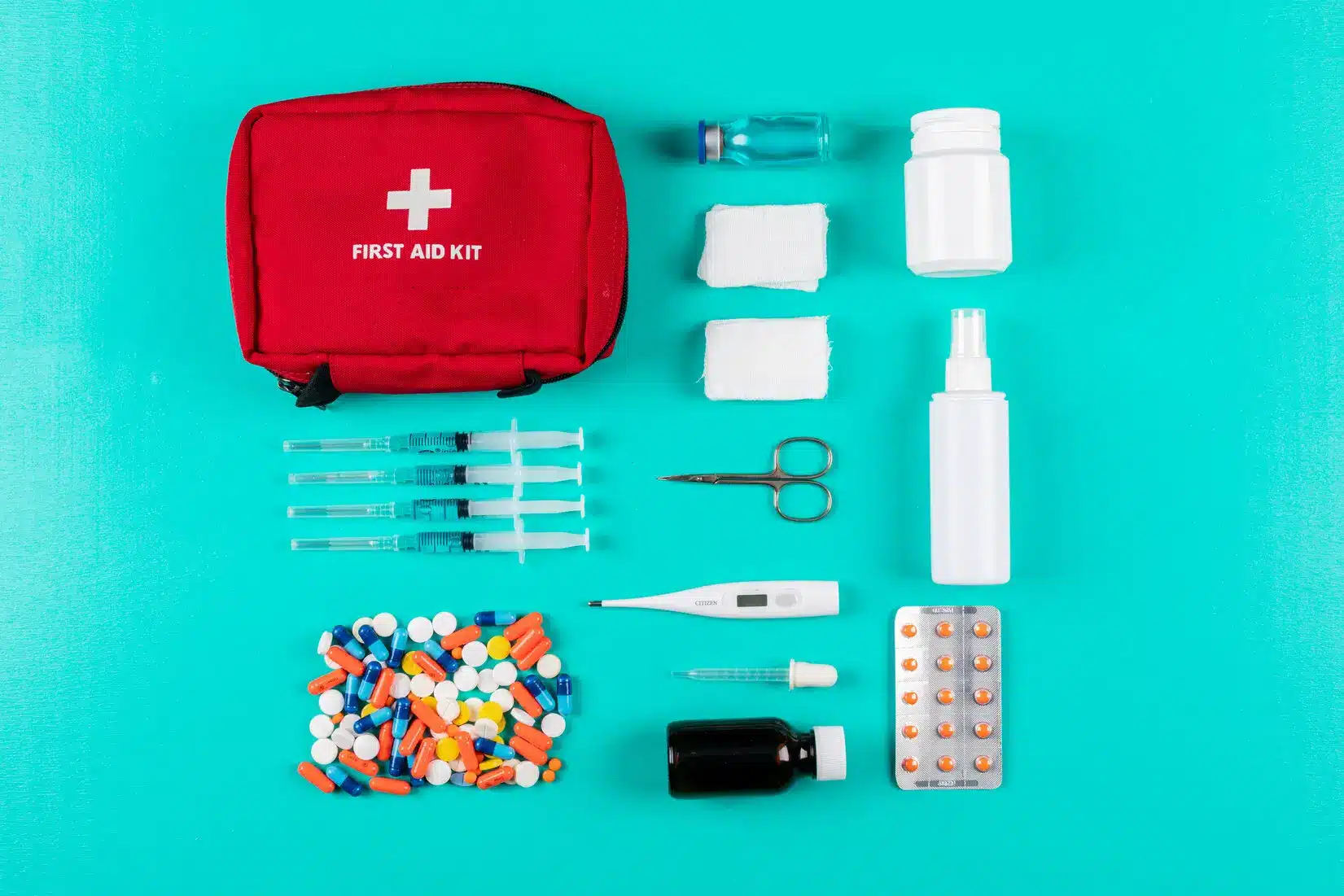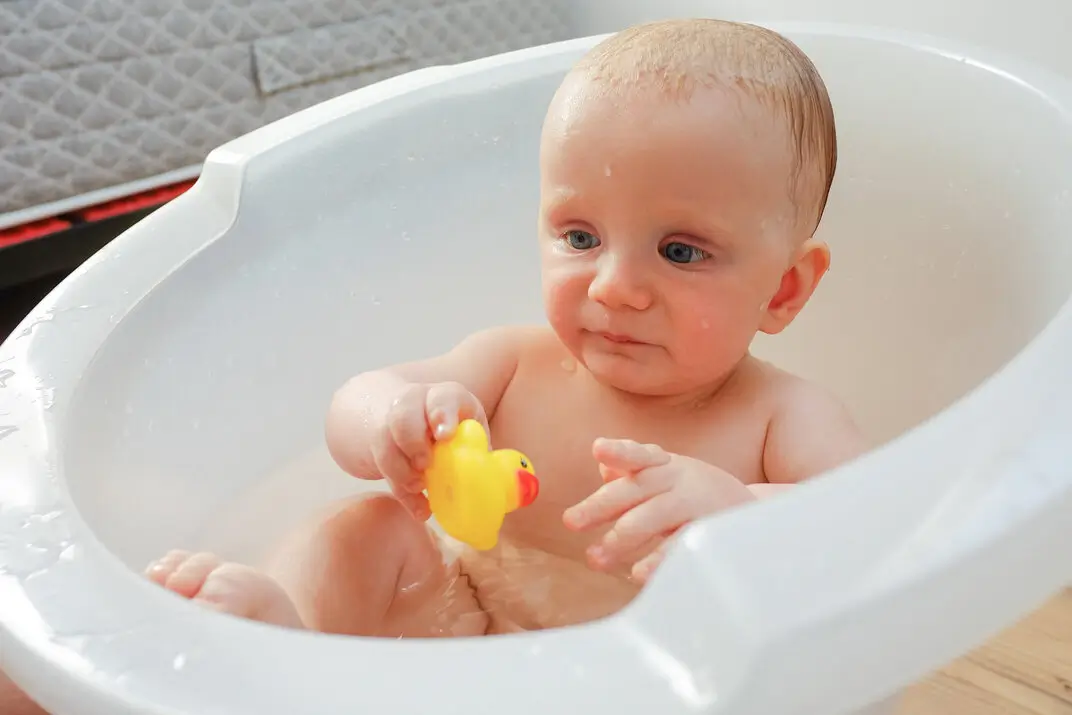Baby’s first aid kit puts order into small emergencies. Minor fevers, new rashes, and doorstep bumps settle faster when the right tools sit in one place, labeled, and ready. Clear instructions, simple packaging, and routine checks turn panic into a plan. With a home kit and a slim travel pouch, the baby’s first aid kit stays practical day and night. When stocked and maintained, the baby’s first aid kit becomes the quiet helper behind calm decisions.
Why a Baby’s First Aid Kit Matters
Prepared beats improvised. Thermometers, saline, adhesive bandages, and dosing tools work best when pre-chosen and labeled inside the Baby’s First Aid Kit. Pediatric groups and first-aid organizations recommend building a baby’s first aid kit kit, learning basics, and refreshing contents on a steady schedule. That simple trio shortens decision time at 2 a.m. and keeps attention on the infant rather than the junk drawer. A home case plus a travel pouch covers most routine needs; quarterly reviews prevent expired items from lingering.
What a baby’s first aid kit must include
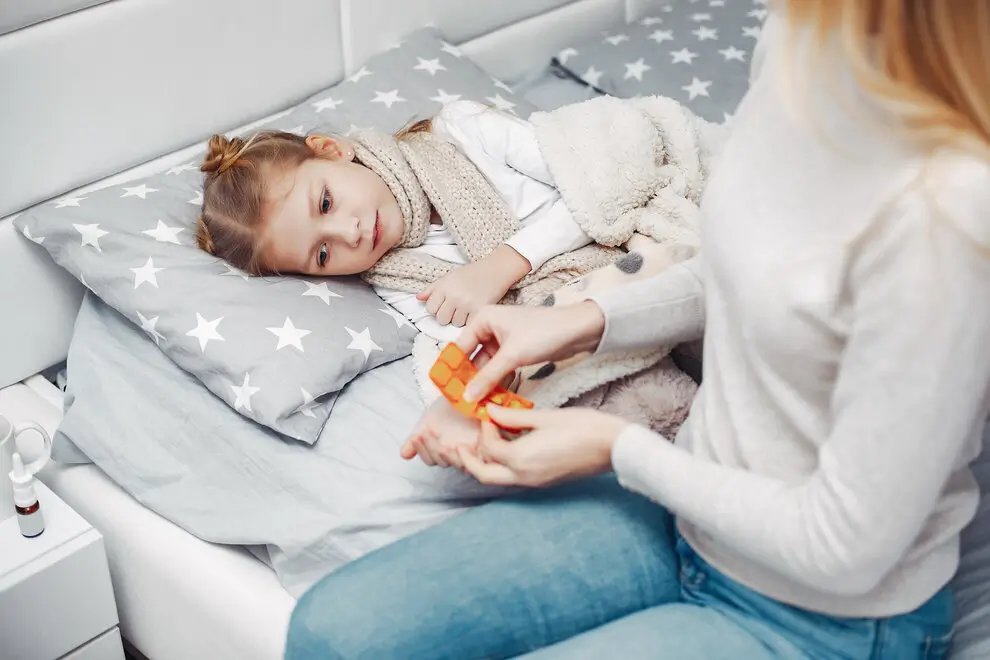
Baby’s first aid kit essentials
A strong baseline mirrors national checklists with infant-friendly sizing. Pack a digital thermometer, nasal aspirator, saline drops, small adhesive bandages, sterile gauze, hypoallergenic tape, blunt-tip scissors, tweezers, alcohol wipes, cotton swabs, an instant cold pack, a soft wrap for dressings, a small flashlight, and spare pacifiers if used. These form the core infant first aid essentials inside the baby’s first aid kit.
First aid kit for infants wound and skin care
Group skin items together so access is fast. Keep saline for irrigation beside gauze and tape. Add bandages sized for tiny fingers and toes. Place petroleum-free options if directed by a clinician. This cluster sits under “clean and cover” in a first aid kit for infants.
First aid kit for babies measuring and dosing
Add dosing syringes and a tiny cup for precise measures. Tuck a laminated contact card with emergency numbers, allergen notes, and pediatric guidance next to the tools. Mark syringes by size to avoid mix-ups. This pocket supports medicines stored separately in an infant medicine kit, while remaining part of the overall first aid kit for babies.
Newborn first aid kit labeling and rotation
Label compartments by task: wound care, rash care, fever tools, and instruments. Use clear, bold tags for quick reads at night. Set a repeating calendar reminder to replace opened or expired items every quarter. This simple upkeep keeps a newborn first aid kit reliable and the baby’s first aid kit ready when needed.
Baby First Aid Kit Checklist and Storage Habits
First Aid Kit for Babies Layout and Maintenance
A baby first aid kit checklist belongs inside the lid and on a phone photo. Sterile supplies ride in a sealed zipper bag. Liquids and ointments stay in a separate pouch. Tools sit in elastic loops. The container remains opaque and labeled to reduce light and heat exposure. One kit stays at home; a slim version rides in the diaper bag.
Monthly checks scan batteries and stock; seasonal scans replace expiring items. A first aid kit for babies stays dependable when the list is simple and the routine steady. Red Cross style checklists stress customization and expiry replacement habits that keep a first aid kit for babies dependable.
Add These Notes to the Checklist
- Thermometer batteries and backup probe covers
- Extra dosing syringes labeled by size
- Tape pre-cut to short strips for one-hand use
- Spare nail clippers in the tool section
- A laminated quick-steps card for fever, cuts, nosebleeds
Medicine Basics for Infants
A quick, parent-friendly guide to build a safe baby’s first aid kit and keep a clear newborn medicine list.
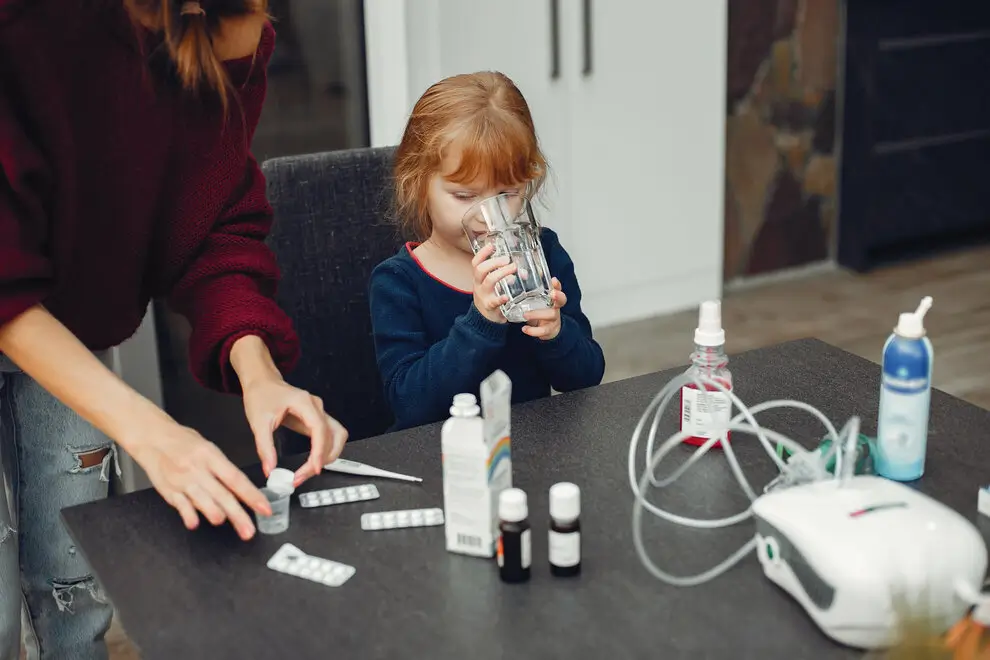
Why this kit matters
A small, well-labeled kit saves time when your baby doesn’t feel well. It also supports childcare first aid at home or on trips.
What to put in the kit
- Oral syringes and a small dosing cup
- Saline nasal drops or spray
- Zinc-oxide diaper cream
- Fragrance-free moisturizer
- Petroleum jelly
- Digital thermometer
- Emery board or nail file
These are your infant first aid essentials. Many stores sell a first aid kit for babies, but you can also pack your own infant medicine kit.
Labeling and storage
Keep only active bottles in the “baby medicine” pocket. Put bright tape on each one with the open date and discard date. This simple system improves infant safety at home.
Layout tips that help at 3 a.m.
Choose gentle, fragrance-free items. Buy small sizes. Use bold labels. Keep the kit in the same spot so steps feel automatic. This works for a first aid kit for a newborn or any first aid kit for a baby.
How to check an infant’s pulse
Use the brachial pulse. Place two fingers on the inside of the upper arm, halfway between the shoulder and elbow. Count beats for 30 seconds and double the number. Practice checking an infant’s pulse when your baby is calm.
Skills and training
Take a first aid course for childcare. Ask the instructor to cover the infant CPR algorithm 2025. A local Baby First class can give you hands-on practice and confidence.
When to seek urgent care
Go right away for trouble breathing, blue or gray skin, a high fever per your clinician’s advice, seizures, signs of dehydration, or if your gut says something is wrong. Keep clinic numbers on a card inside the kit of your mini urgent care medical kit.
This baby first aid kit checklist suits a newborn first aid kit, Always confirm doses and products with your pediatric clinician. Store items out of reach and replace them by the discard date.
Skills that Unlock the Kit: Pulse Checks and CPR
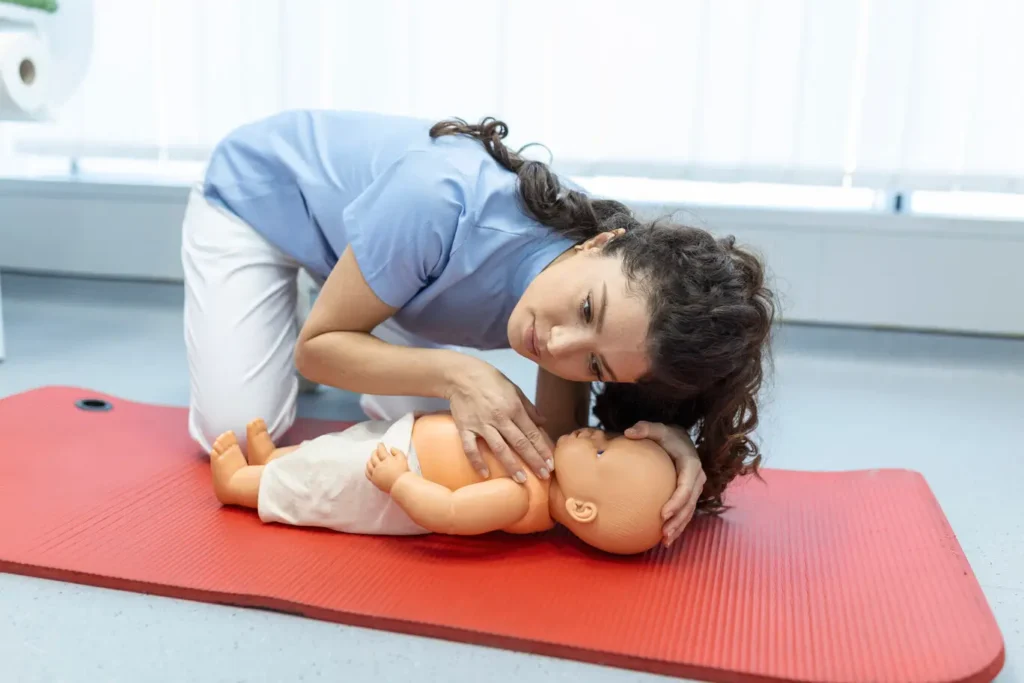
Checking an Infant’s Pulse and Infant CPR Algorithm 2025
Tools work best with skills. Checking an infant’s pulse uses the brachial site on the upper arm for no longer than 10 seconds before moving to the next action. Current pediatric BLS summaries and the infant cpr algorithm 2025 keep steps clear. The practical takeaway stays steady: enroll in a class, refresh every two years, and keep a printout of current steps with the kit.
Source: cpr.heart.org.
Training Paths for Careers and Centers
Quality training strengthens a baby’s first aid kit. Options include childcare first aid modules tailored to early-years rooms, a hands-on first aid course for childcare, and site refreshers under first aid for childcare. Community schedules often feature an in-person baby first class that covers choking response and infant CPR with practice manikins. Certificates remain current through regular refresher dates.
Source: HealthyChildren.org.
DIY Baby First-Aid Kit
A compact plan for a baby’s first aid kit that stays simple, organized, and ready for home or travel.
Case and layout
A mid-size hard case or padded zip case works well. Inside, three clear zones reduce mistakes and support infant safety at home. Keep sizes small and labels bold so items return to the same place after each use.
Three zones
“Clean and cover” holds wipes, saline, gauze, tape, and bandages. “Measure and manage” holds a digital thermometer, oral syringes, and a printed dosing grid useful for an infant medicine kit or first aid kit for a newborn. “Breathe and soothe” holds a nasal aspirator, a backup pacifier, and a gentle moisturizer fit for a first aid kit for babies needs.
Car and travel backup
A second case rides in the car as an urgent care medical kit for longer drives. The travel set mirrors the home kit so the same layout makes sense anywhere.
Labels, dosing, and records
Each bottle or tube carries an open date and discard date. A simple log tracks product changes and dosing notes. This approach supports childcare first aid routines and keeps the dosing grid accurate.
Digital access and contacts
A small QR sticker links to a private cloud note with allergy details, clinician numbers, and emergency contacts. The file can also store links to infant CPR algorithm 2025 guidance from an approved course in first aid for childcare.
Checklist in the lid
A travel copy of the baby first aid kit checklist sits under the lid so items return to the right zone after use. The same checklist can be printed for the glove box to keep both kits aligned.
Travel Add-Ons and Car-Ready Urgent Care Medical Kit
Travel adds three upgrades: age-suitable sun and bug protection, extra hydration tools, and motion-friendly cleanup gear. For flights, the compact pouch rides in checked bags when liquids exceed limits. A glovebox stash bandages, gauze, wipes, spare thermometer batteries turns the car into a backup station that complements the first aid kit for infants already in the diaper bag.
Infant Safety at Home: Placement and Quick Use
Short guide for a ready baby’s first aid kit that supports infant safety at home.
Kit location
Place the home case high, dry, and central. Keep it away from heat and out of reach. Labels should face outward. The checklist should face up for fast reading.
Finding the kit fast
Add a fridge magnet with emergency numbers. Mark the hallway map with a small dot showing the kit’s spot. Caregivers can locate it in seconds.
Access and flow
Use one clear path to the kit from sleeping and play areas. Keep the surface around it uncluttered. Return items to the same layout after use to avoid delays.
Maintenance schedule
Run paired routines: monthly checks and quarterly expiry reviews. Replace expired items and restock missing pieces. This rhythm keeps a first aid kit baby current and reliable.

Expanded Item Guide by Situation
Fever, Rash, Cuts, and Splinters
Fever and comfort: Digital thermometer, probe covers, dosing syringe, cool-mist humidifier nearby, lightweight sleepwear.
Stuffy nose: Saline drops, nasal aspirator, soft tissues, petroleum jelly for nostril rims.
Rashes and bites: Zinc-oxide cream, fragrance-free moisturizer, age-safe balm if advised.
Minor cuts: Sterile gauze, saline for irrigation, hypoallergenic tape, small adhesive bandages.
Splinters: Tweezers, alcohol wipe, mini flashlight.
These align with consumer-friendly lists and pediatric summaries; the exact mix is customized per clinician input and allergy profile.
Baby’s First Aid Kit in Childcare and Group Settings
Nursery rooms and centers align the newborn first aid kit with site policy and keep an inventory log. A posted grab card lists location, restock dates, and who checks it. Facilities often mirror a first aid kit for babies at reception plus room-level pouches for quick access. Adopting childcare first aid standards keeps training consistent among rotating staff.
Naming the Medicine Pocket Clearly
Must Have Medicines for Infants and Labels
Clear names prevent late-night mix-ups. The pocket holding must have medicines for infants, marks syringes by size, logs open dates, and separates topical from oral. A printed newborn baby medicine list rides behind the clear window. A small divider labeled infant first aid essentials sits in front so tools appear first during a rush.
Quick Response Playbooks
One-Page Cards Next to Baby’s First Aid Kit
Fever, rash, cut, or cough moments feel smaller when a card lives next to the baby’s first aid kit. A one-page fever guide lists the preferred thermometer site, steps for comfort, and the clinician number. A rash card reminds you to check for spread and to use gentle moisturizers before escalating. A cut card lists clean, cover, and watch signs. These micro-guides make a baby’s first aid kit easier to use under stress and keep care consistent across caregivers. Pediatric resources highlight the value of checklists and CPR-class selection for families.
Maintenance Calendar That Keeps the Kit Honest
Schedules make gear reliable. A monthly five-minute check confirms batteries, counts bandages, and scans the baby first aid kit checklist. A seasonal thirty-minute review replaces expiries, rewinds tape, and refreshes labels. Posting the review dates inside baby’s first aid kit prevents guesswork. National lists from first-aid organizations encourage customization and expiry replacement as standing habits, the exact routine that turns baby’s first aid kit into a dependable tool year-round.
Home Layout That Speeds Decisions
Location matters. A central shelf with a door latch protects access while keeping the baby’s first aid kit quick to reach. A smaller pouch rides in the diaper bag so a travel day still includes the baby’s first aid kit basics. Car duplicates sit in a glovebox container as an urgent care medical kit for roadsides and parks. Children’s health sites echo the same idea: one home base, one travel copy, and clear labels on both.
Why Training Pairs with the Kit
Skills turn tools into care
Training raises the value of a baby’s first aid kit far above its parts. Classes add calm, sequence, and speed when seconds matter.
Practice that sticks
A short first aid course for childcare builds confidence with choking drills, checking an infant’s pulse, and chest compressions. Hands-on time is a core piece of childcare first aid.
Keep guidance close
Current materials for the infant CPR algorithm 2025 are printable and can live under the kit lid. Clear steps beside the supplies reduce hesitation and errors.
One system
The kit provides tools; training provides the order of actions. Together, they form a single system that supports safe, fast care at home and on the go.
Common Mistakes and Easy Fixes
Overflowing boxes slow care. The cure is to keep the baby’s first aid kit focused and to park duplicates in a back-stock bin. Unlabeled syringes cause mix-ups; color-dot labels close that gap. Expired ointments hide in corners; quarterly reviews pull them out. Travel days tempt shortcuts; the diaper-bag pouch mirrors the home baby’s first aid kit to guard against that. One clear layout and a short routine solve most problems families report.
Quick “Chart” Snapshot of the Kit
| Category | Examples (fast scan) |
| Fever & comfort | Digital thermometer, probe covers, dosing syringe |
| Breathing & nose | Saline drops, nasal aspirator, soft tissues |
| Skin, rashes, bites | Zinc-oxide cream, moisturizer, gentle balm |
| Cuts & scrapes | Sterile gauze, saline, hypoallergenic tape, bandages |
| Tools & extras | Tweezers, blunt scissors, flashlight, cotton swabs |
| Medicines & logs | Infant medicine kit, label tape, change log |
| Travel & car | Urgent care medical kit, spare batteries, wipes |
FAQs
Which courses cover childcare needs?
Ans: A first aid course for childcare plus periodic childcare first aid refreshers; many centers add in-service days.
What belongs in an infant medicine kit?
Ans: Oral syringes, saline drops, zinc-oxide cream, fragrance-free moisturizer, dosing grid, and a baby medicine must haves note kept as an infant medicine kit.
What should labels call a newborn kit?
Ans: Newborn first aid kit or new born baby first aid kit contents follow the same structure.
What are widely accepted infant first aid essentials?
Ans: Thermometer, saline, bandages, gauze, tape, nasal aspirator, tweezers, and dosing tools core infant first aid essentials.
Where to track doses and changes?
Ans: A one-page newborn medicine grid: Condition | Product | Clinician-confirmed dose; use a newborn medicine change log.
Which skills pair best with the kit?
Ans: Childcare first aid plus infant CPR algorithm 2025 training.
Is a travel backup useful?
Ans: Yes, keep a car set as an urgent care medical kit mirroring the home baby’s first aid kit.
How to check an infant’s pulse quickly?
Ans: Use the brachial pulse on the inner upper arm; count 30 seconds and double check an infant’s pulse.

